When shopping for a pickup truck, payload and towing figures usually dominate the spec sheet. But for many drivers—especially those using their truck as a family vehicle or daily driver—interior cab space plays just as important a role.
Crew cabs, with their full-sized rear seating, have become the go-to body style in today’s pickup market. Yet, not all crew cabs are created equal.
Some pickups offer cavernous interiors with limousine-like rear legroom and headroom, giving passengers in all rows true comfort for long rides. These are the trucks you want when you’re regularly ferrying coworkers, family members, or tall adults.
On the other hand, some crew cabs are tighter than expected, offering only marginal improvement over extended cabs and causing discomfort on longer trips.
In this guide, we’ll spotlight the five pickup crew cabs with the most interior space—trucks that truly live up to the “crew” label. Then, we’ll turn the spotlight on five models with cramped quarters, where expectations fall short, especially in the back seat.
Whether you’re shopping for maximum comfort or trying to avoid a tight squeeze, understanding how crew cabs stack up helps you choose the truck that best fits your lifestyle—inside and out.
Also Read: 5 BMWs That Age Gracefully and 5 That Don’t
5 Pickup Crew Cabs With the Most Interior Space
While towing power, off-road prowess, and bed length are major selling points for pickup trucks, interior space is often what makes or breaks the ownership experience—especially in crew cab configurations.
For many buyers, the crew cab turns a work truck into a daily driver or family hauler. It’s the configuration that transforms your truck into a mobile office, a road trip cruiser, or a carpooling machine.
That’s why cab dimensions—particularly rear seat legroom, headroom, and shoulder space—matter more than most people think.
Not all crew cabs are equal, though. Some automakers go all-in on cabin comfort, offering rear seat space rivaling that of full-size SUVs. These roomy trucks provide ample stretch-out space for adults, tall passengers, and growing families.
Others pack in clever features like under-seat storage, rear-seat recline, or panoramic sunroofs that amplify the sense of openness inside.
In this section, we’ll highlight five pickup trucks that offer the most spacious and accommodating crew cab interiors on the market.
These vehicles lead the pack not just in spec-sheet measurements, but in real-world passenger comfort and interior usability.
Whether you’re a construction supervisor driving a team around, a parent hauling kids and gear, or just someone who enjoys elbow room, these trucks deliver space that genuinely enhances the ride.
We’re spotlighting these models because interior comfort is often overlooked in favor of torque and towing—but for many, the crew cab is where the truck earns its keep. These are the trucks that get it right.
1. 2024 Ram 1500 Crew Cab — Rear Legroom: 45.2 in
When it comes to interior comfort, the 2024 Ram 1500 Crew Cab is the undisputed king of the full-size pickup segment. With a staggering 45.2 inches of rear legroom, it offers more backseat space than many luxury SUVs and even some long-wheelbase sedans.
Whether you’re shuttling adults to the job site or road-tripping with the whole family, the Ram 1500 Crew Cab gives every passenger the space to stretch out.
The spaciousness isn’t just about raw numbers—it’s about the experience. The Ram 1500’s cab is thoughtfully designed, with plush seating, generous headroom (39.8 inches in the rear), and wide door openings that make ingress and egress easy.
Rear seat passengers enjoy ample toe room under the front seats, plus a near-flat floor that allows three adults to sit comfortably across without stepping on each other’s feet.
Beyond sheer size, the Ram’s cabin is exceptionally well-appointed. Upper trims like the Laramie, Limited, and Longhorn offer leather upholstery, ventilated and heated rear seats, and dual-pane panoramic sunroofs that enhance the open feel.
Even in lower trims, materials are soft-touch and solidly built, contributing to a more refined ride experience.
Another big win is the rear seatback angle—it’s slightly reclined, giving passengers a more natural seating posture.
Additionally, Ram incorporates clever storage solutions such as under-seat compartments, in-floor RamBins, and fold-up rear seats to convert the second row into a cargo zone when needed.
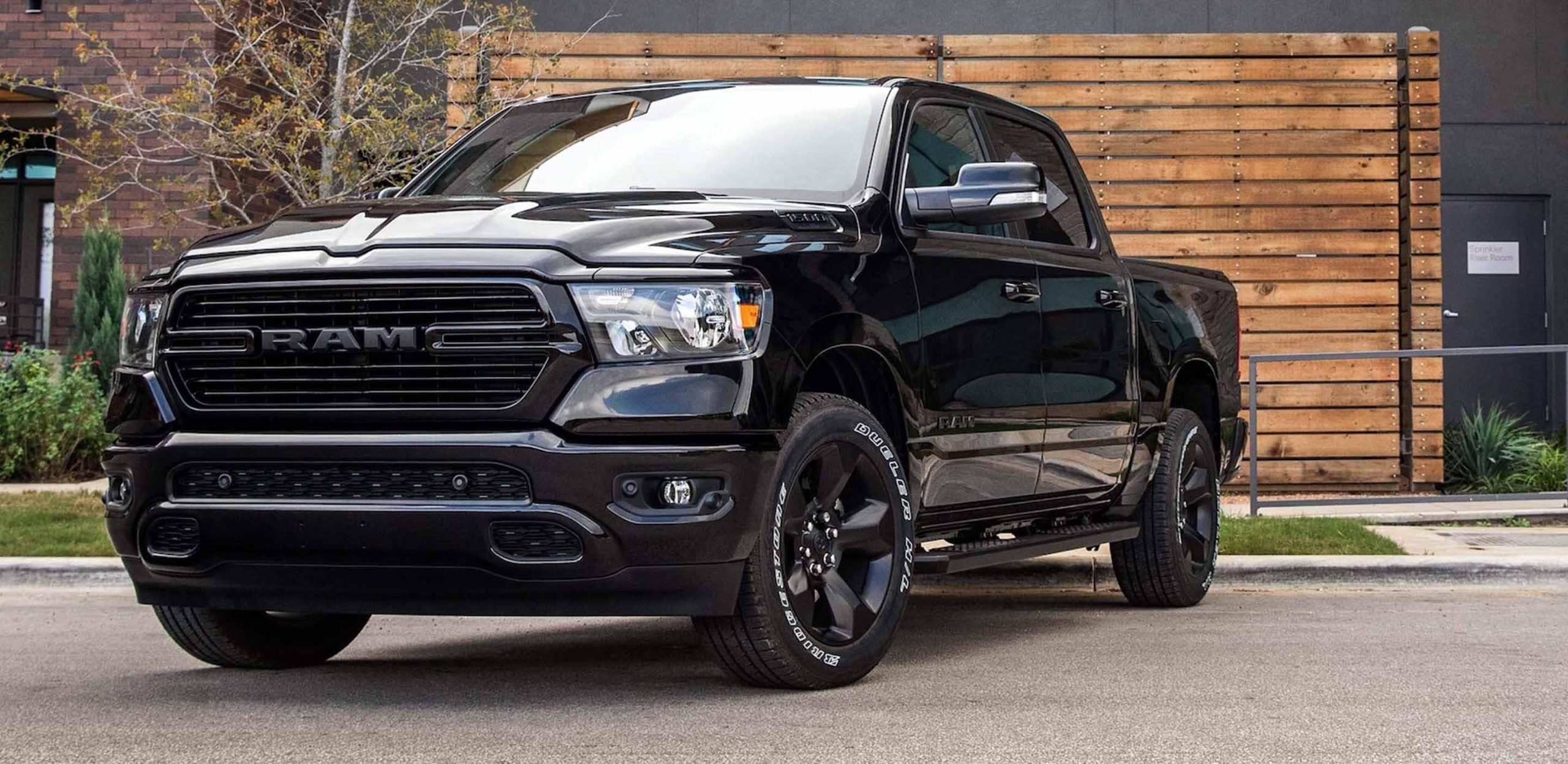
Why does this matter? Because full-size truck buyers increasingly use their vehicles as do-it-all machines: family car, work tool, and weekend escape pod.
The Ram 1500 recognizes that and doesn’t treat the rear seats as an afterthought. It’s a full-fledged living space—quiet, roomy, and comfortable.
If rear passenger space is a top priority for you, the 2024 Ram 1500 Crew Cab doesn’t just win—it dominates. Whether you opt for a mid-range trim or go full luxury, you’re getting class-leading room where it counts most.
2. 2024 Ford F-150 SuperCrew — Rear Legroom: 43.6 in
The 2024 Ford F-150 SuperCrew is a textbook example of how to do a full-size crew cab right. With 43.6 inches of rear legroom, this truck is nearly limo-like in its spaciousness, making it one of the most comfortable pickups on the market for rear-seat passengers.
Ford didn’t just prioritize payload and power—it made sure that families, teams, and long-distance drivers had room to breathe, stretch, and relax.
Ford’s SuperCrew configuration transforms the F-150 into a genuine five- or six-passenger vehicle, capable of comfortably carrying adults in both front and rear rows.
Tall passengers will appreciate the generous headroom (40.4 inches in the rear), while the nearly flat floor adds to the sense of openness and makes the center rear seat far more usable. Accessing the second row is also easy, thanks to large, wide-opening doors.
The F-150’s cabin materials vary by trim, but even mid-tier XLT models feature well-padded seats and supportive cushioning. Higher trims like Lariat, King Ranch, and Platinum elevate the luxury feel with leather, ambient lighting, and optional heated rear seats.
There’s also plenty of thoughtful storage—under-seat compartments, a fold-flat rear floor, and large door pockets enhance the truck’s utility.
Beyond just space, Ford has prioritized interior innovation. Rear passengers benefit from excellent outward visibility and optional amenities like rear USB ports, fold-down armrests, and reclining seatbacks in higher trims.
The combination of physical space and thoughtful features makes the SuperCrew feel more like a mobile living room than a utility vehicle.
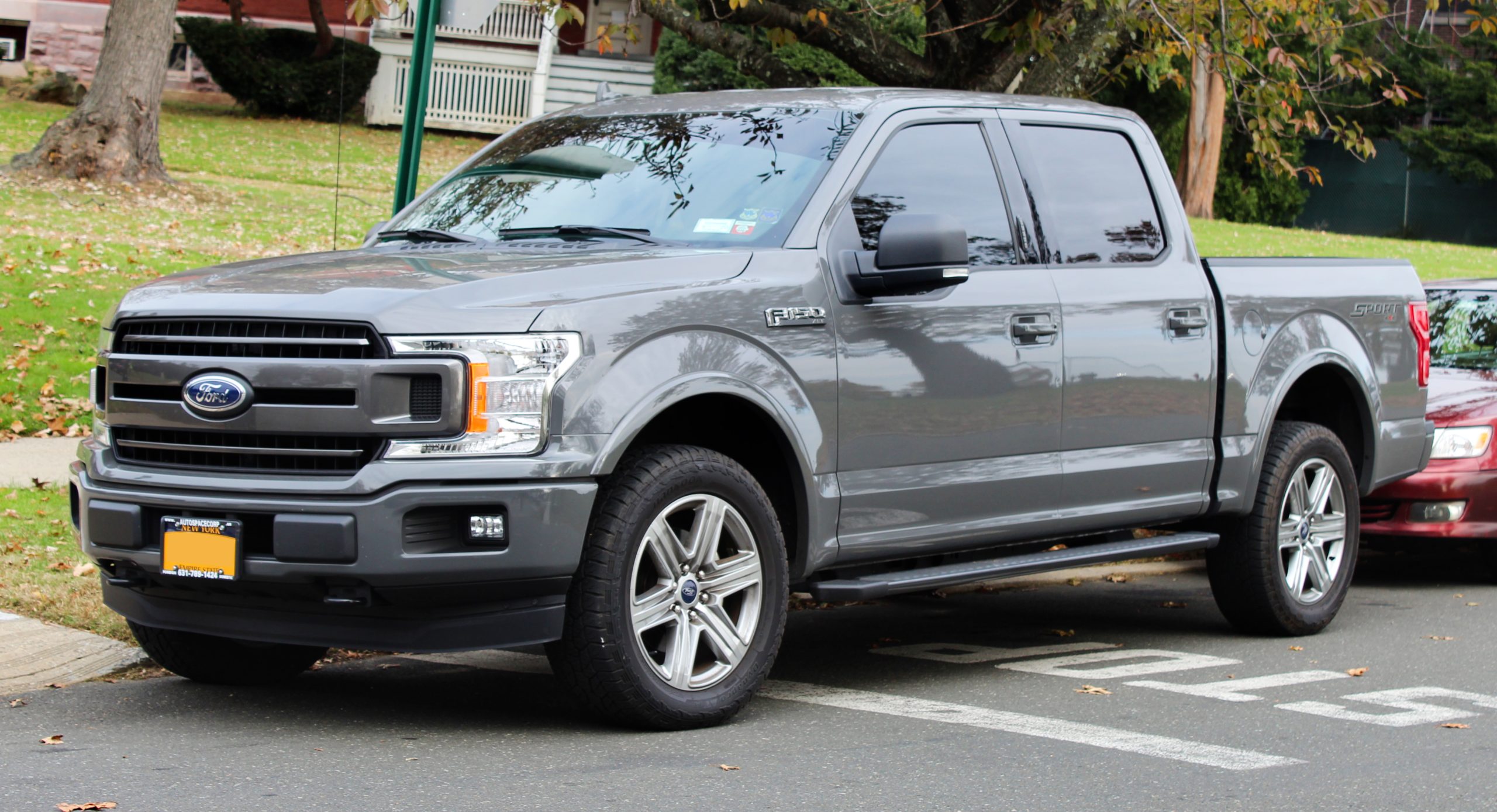
The F-150’s versatile SuperCrew layout is a key reason it’s often chosen over rivals in both family and fleet applications. Whether you’re transporting coworkers between job sites or taking kids to soccer practice, there’s room for everyone—and everything they bring along.
In today’s market, where pickups serve as everything from business tools to family vehicles, the 2024 Ford F-150 SuperCrew stands out not just for performance, but for livability.
It’s a great example of how modern trucks are evolving into multi-use machines that offer both capability and comfort in equal measure.
3. 2024 Chevrolet Silverado 1500 Crew Cab — Rear Legroom: 43.4 in
The 2024 Chevrolet Silverado 1500 Crew Cab is one of the roomiest full-size pickups on the market, delivering 43.4 inches of rear legroom—just slightly behind the Ford F-150 but still generous enough to rival most full-size luxury sedans.
Whether you’re driving to a job site with a full crew or heading on a long family road trip, the Silverado’s cab ensures that no one in the back seat will feel shortchanged.
Chevy’s design emphasizes spaciousness and functionality. The Crew Cab configuration comes standard with four full-size doors and a completely usable second row.
Rear seat passengers benefit from 40.1 inches of headroom, a nearly flat floor, and wide bench seating that can comfortably accommodate three adults across. The door openings are wide, and step-in height is manageable—important for older passengers or families with kids.
Where the Silverado particularly excels is in how it uses that space. There’s ample legroom even with tall front occupants, plus useful storage under the rear seat and in clever cubbies built into the seatbacks.
If you need to haul larger gear inside the cab, the rear seat bottoms flip up easily to expose a flat floor perfect for transporting tools, large boxes, or valuable items you’d rather not leave in the bed.
Interior refinement has come a long way, too. For 2024, Chevy continues to improve material quality and layout, especially on LT trims and above.
The infotainment screen is large and responsive, and rear seat passengers benefit from rear air vents, USB ports, and optional heated seats—creature comforts that elevate the cabin experience.
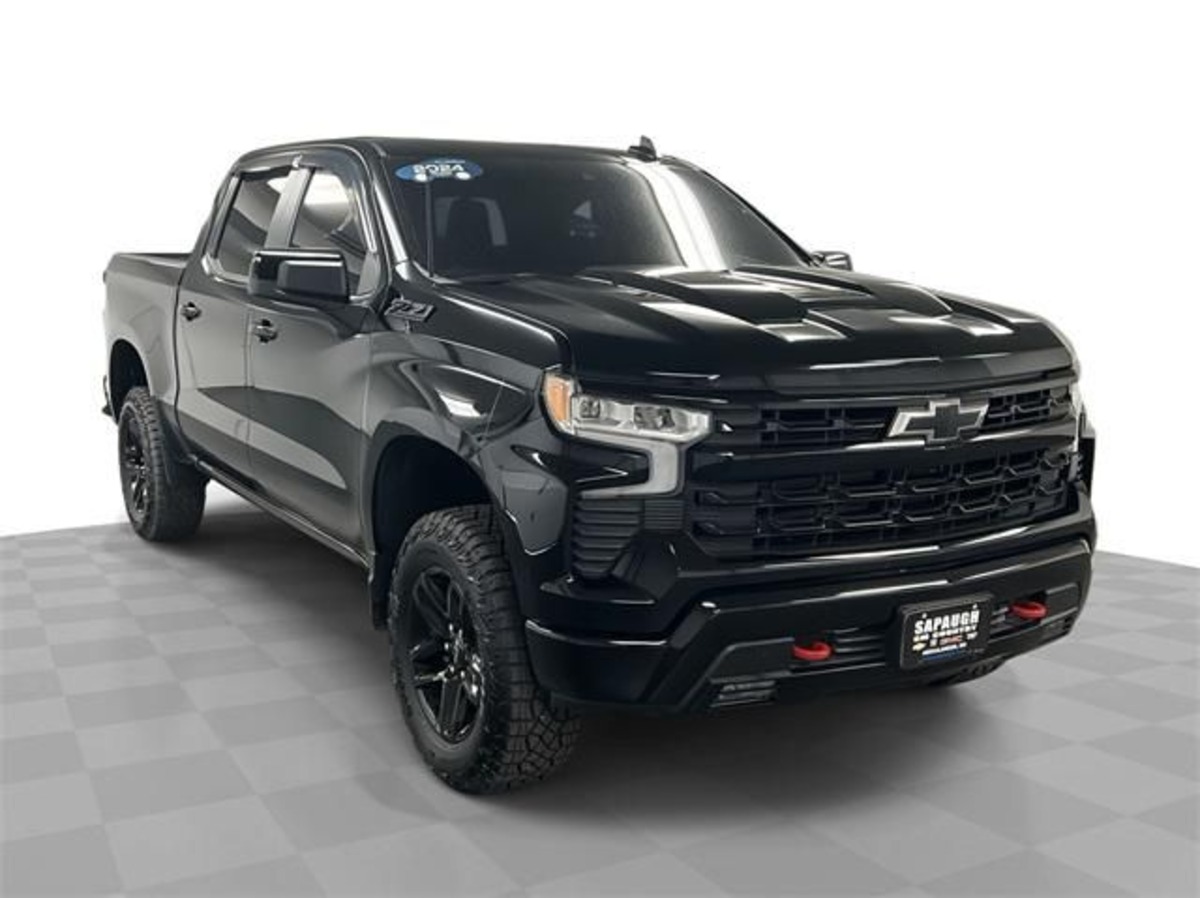
Why highlight the Silverado’s cab space? Because many buyers overlook how much time their passengers will actually spend in the back seat—whether it’s workers, friends, or family.
The Silverado Crew Cab delivers a level of comfort that makes it a practical choice for drivers who need their truck to do more than just tow and haul.
Spacious, quiet, and full of smart design choices, the 2024 Chevrolet Silverado 1500 Crew Cab makes a strong case for being one of the most livable pickups on the road today.
5. 2024 GMC Sierra 1500 Crew Cab — Rear Legroom: 43.4 in
The 2024 GMC Sierra 1500 Crew Cab blends premium comfort with serious capability, and its interior dimensions reflect a deep understanding of what modern truck buyers expect—especially when it comes to passenger space.
Offering 43.4 inches of rear legroom, the Sierra Crew Cab matches its corporate cousin, the Chevrolet Silverado, in spaciousness, but adds a more upscale ambiance that elevates the experience for all passengers.
From the moment you open the Sierra’s rear doors, the cab feels generous and thoughtfully laid out.
Rear passengers benefit from 40.1 inches of headroom, a nearly flat floor, and a wide, supportive bench seat that easily accommodates three full-sized adults. Getting in and out is easy, thanks to large door openings and well-positioned grab handles.
But what truly sets the Sierra apart is how it complements that space with near-luxury refinement.
In higher trims like the SLT, AT4, and Denali, rear-seat occupants are treated to premium materials, available heated outboard seats, rear air vents, USB-C charging ports, and even soft ambient lighting.
The quietness of the cabin—enhanced by active noise cancellation and triple-sealed doors—makes it an ideal environment for passengers, whether you’re on a long haul or just commuting around town.
The Sierra also incorporates smart storage into the cabin. The rear seat bottoms flip up to reveal a flat load floor, and the optional in-seat storage compartments built into the seatbacks offer a clever spot for stowing small tools, electronics, or emergency gear.
For work crews and families alike, the spacious and comfortable rear seating in the Sierra Crew Cab turns what could be a purely functional space into something genuinely accommodating.
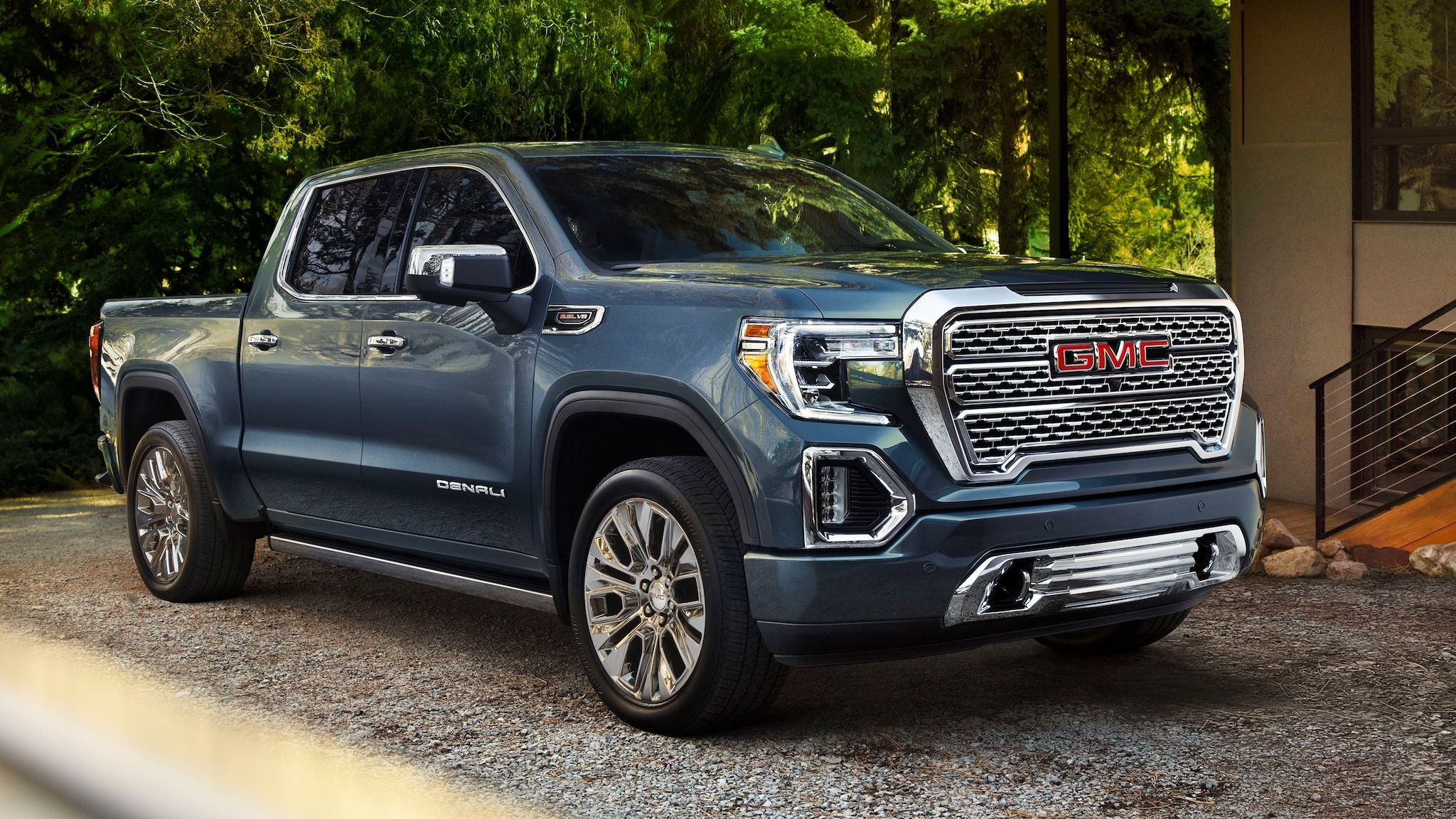
It’s especially useful for contractors who transport colleagues, parents carpooling kids, or anyone who values comfort as much as capacity.
In a world where pickup trucks are asked to do it all—tow heavy, drive smooth, and carry people in comfort—the 2024 GMC Sierra 1500 Crew Cab rises to the challenge. It’s a big, capable truck that doesn’t forget about the people riding in the back.
5 Pickup Crew Cabs With Tight Quarters
Not all crew cab pickups are created equal. While the term “crew cab” usually suggests a roomy, full-size rear seat fit for family or team transport, that’s not always the reality.
In fact, several trucks on the market today feature crew cab configurations that are surprisingly cramped, especially when compared to class leaders.
Whether due to a smaller overall footprint, packaging compromises, or aging platform designs, some of these models fall short when it comes to interior spaciousness—particularly in the second row.
For drivers who rarely carry passengers, these tighter crew cabs may be perfectly fine. But for those expecting true five-passenger usability, the lack of legroom, headroom, and shoulder space can quickly become a daily frustration.
Rear passengers may find themselves squeezed behind tall front-seat occupants or forced to sit with knees elevated due to limited floor depth and flat seat angles.
This section highlights five pickups whose crew cab layouts feel tighter than they should, especially when measured against the best in the segment.
These are trucks that may still perform well in towing, off-roading, or fuel economy—but come up short when tasked with comfortably carrying full-grown adults in the back seat.
We’re not here to bash these trucks entirely; in many ways, they still serve their purpose. But if you’re planning to carry passengers often—or use your pickup as a daily driver for a family—these are models you’ll want to think twice about, or at least test thoroughly before buying.
Because when you’re spending hours on the road, interior comfort matters just as much as the numbers on a spec sheet.
1. Nissan Frontier Crew Cab — Rear Legroom: 33.2 in
The Nissan Frontier Crew Cab received a major redesign in 2022, modernizing its exterior, interior, and tech features. But one area where the Frontier still lags—despite these updates—is in rear seat space.
With just 33.2 inches of rear legroom, the Frontier Crew Cab feels more like an extended cab from years past than a true full-size-friendly crew cab.
On paper, the Frontier is positioned as a midsize pickup, and that designation partly explains its compact rear quarters. However, compared to rivals in the same class—like the Honda Ridgeline or Ford Ranger—the Frontier’s second-row space is noticeably more cramped.
Adult passengers in the rear seats may quickly find themselves squeezed for knee room, especially if front-seat occupants are on the taller side.
Headroom is slightly better at 38.6 inches, but the upright rear seatback and limited recline angle make long trips uncomfortable.
The seat bottoms also sit relatively low to the floor, resulting in a knees-up seating position that lacks proper thigh support—something rear passengers will definitely feel over extended drives.
Ingress and egress can also be a challenge. The rear door openings are small, and the door swing angle isn’t as wide as you’d find in larger trucks.
This can be frustrating for passengers trying to get in with car seats, gear, or simply more legroom expectations than the Frontier provides.
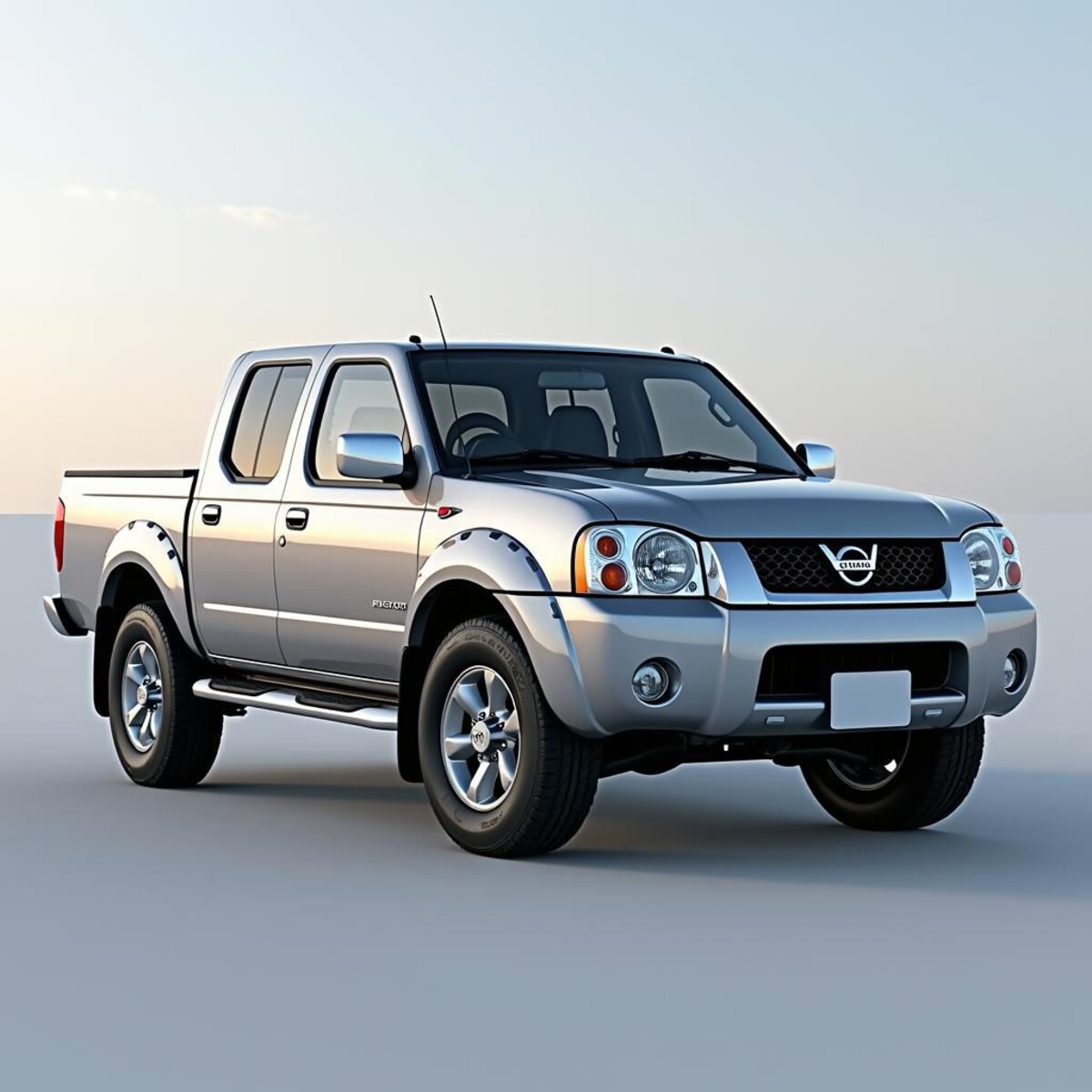
To its credit, the Frontier’s rear cabin does offer solid build quality, and Nissan includes thoughtful touches like USB charging ports, available rear seat heaters in upper trims, and a power sliding rear window. But the underlying issue remains: the space simply isn’t there.
The Frontier Crew Cab might be a solid option for solo drivers or those who only occasionally carry passengers. Its V6 power, rugged looks, and strong towing capabilities are all pluses. But if rear-seat comfort is a priority for you, this truck may come up short—literally.
In the increasingly competitive midsize market, the Nissan Frontier Crew Cab still brings plenty to the table—but its tight second-row accommodations mean it’s not the best choice if your crew includes full-size adults.
2. Chevrolet Colorado Crew Cab — Rear Legroom: 34.7 in
The Chevrolet Colorado has made a name for itself as a capable midsize truck with a solid balance of off-road capability, on-road comfort, and towing strength.
But in its Crew Cab form, the Colorado shows its limitations when it comes to interior space—particularly in the rear seats.
With just 34.7 inches of rear legroom, the Colorado’s back row feels noticeably tight, especially when compared to other trucks in the same class that prioritize passenger room.
Despite its “Crew Cab” designation, the rear seat in the Colorado is more appropriate for short trips or smaller occupants. Adult passengers sitting behind taller front-seat riders will find their knees pressed up against the seatbacks.
Legroom is at a premium, and the seat cushions are mounted low to the floor, resulting in a knees-up posture that becomes tiring over longer drives.
The headroom in the rear is serviceable at 38.3 inches, but shoulder and hip room also feel limited due to the narrower cabin width. Adding to the discomfort is the relatively upright seatback angle, which makes the seating position feel more rigid than relaxed.
To its credit, Chevrolet has tried to make the best of the space. In recent model years—including the revamped 2023+ Colorado—rear passengers gain access to USB-C charging ports, improved cabin materials, and larger rear windows that at least help the cabin feel a bit more open.
The seat bottoms fold up to create a modest cargo area inside, but storage flexibility doesn’t fully make up for the tight dimensions.
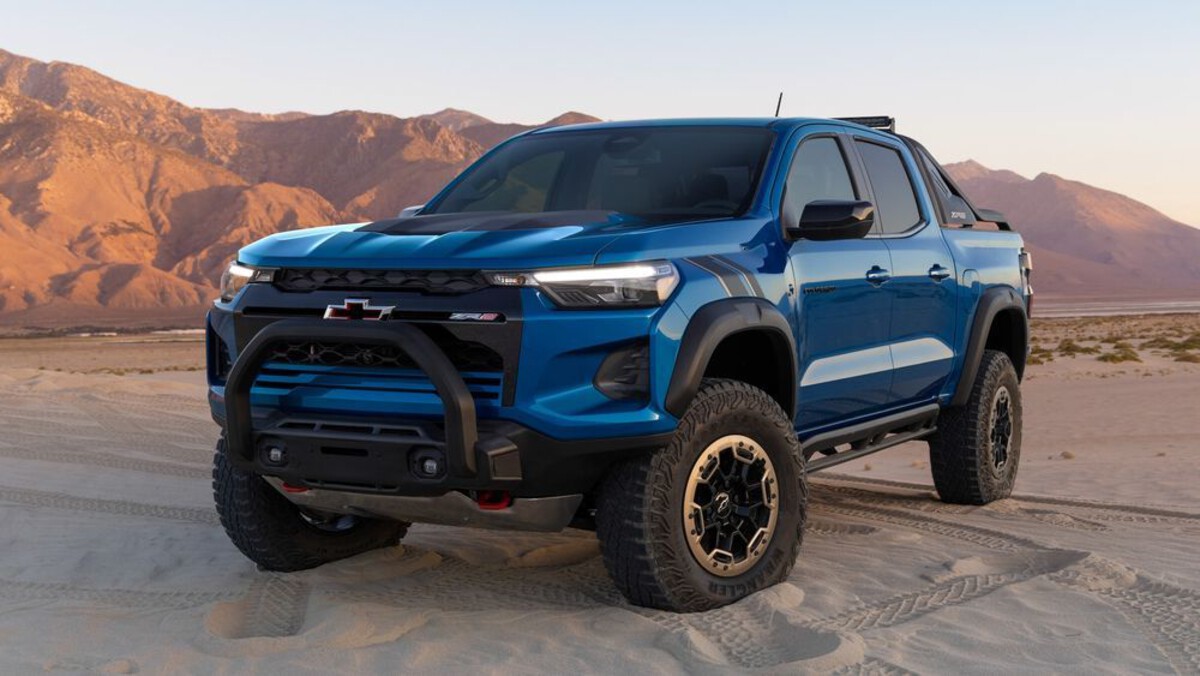
For solo drivers or couples who occasionally carry passengers, the Colorado Crew Cab may be just fine. It offers strong towing, a confident chassis, and excellent tech in newer models.
But for those who plan to use the back seat regularly—for family, coworkers, or friends—it’s worth test-sitting before committing.
In the growing midsize market, where buyers often want SUV-like comfort with truck capability, the Chevrolet Colorado Crew Cab still has some catching up to do.
While it excels under the hood and in capability, its cramped rear cabin makes it a less ideal choice for those who truly need a roomy, versatile interior.
3. Toyota Tacoma Crew Cab (Double Cab) — Rear Legroom: 32.6 in
The Toyota Tacoma is one of the most popular midsize pickups on the road, beloved for its bulletproof reliability, rugged off-road capability, and strong resale value. But if there’s one area where it consistently underperforms, it’s rear passenger space.
The Tacoma Double Cab, Toyota’s version of a crew cab, offers just 32.6 inches of rear legroom—making it one of the tightest in its class, and arguably one of the most uncomfortable for rear-seat passengers.
Despite having four full doors and seating for five, the Tacoma’s rear seat feels more like an afterthought than a true second-row experience. Adults taller than 5’10” will find their knees pushed up against the front seats, with little space to stretch out.
The seat bottoms are low and flat, providing minimal thigh support, and the upright seatback angle doesn’t help comfort either. This isn’t the setup you want for road trips or daily carpool duty.
The tight cabin can also be a problem for families. Fitting a rear-facing child seat often requires moving the front seat far forward—compromising comfort for both rows.
The narrow door openings and higher step-in height make entry and exit a bit awkward as well, especially for children or older adults.
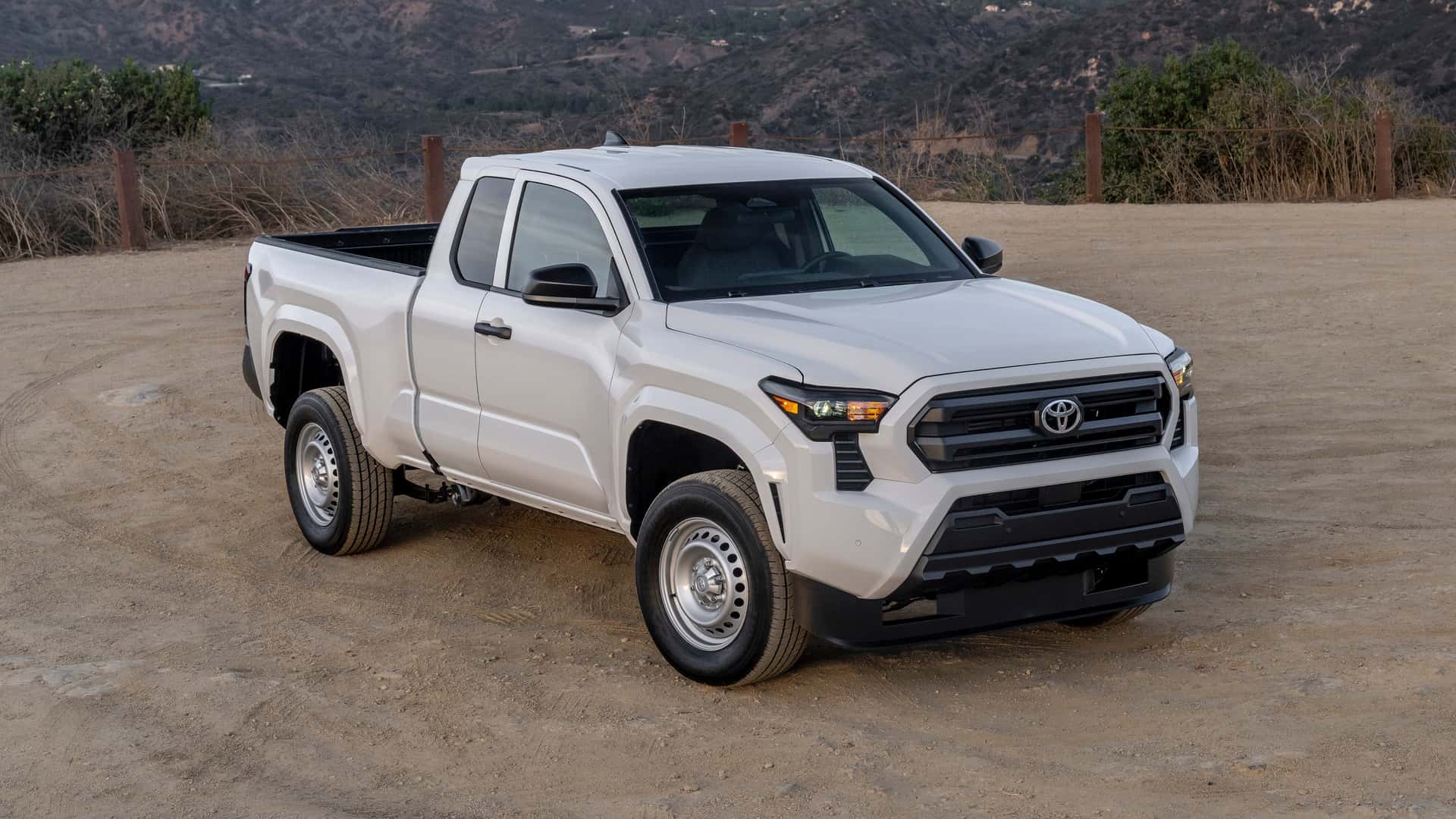
On the plus side, the Tacoma Double Cab does include some handy features like under-seat storage bins, rear USB ports (in higher trims), and durable materials that hold up to daily abuse. But none of these can overcome the fundamental spatial limitation of the back seat.
It’s worth noting that the Tacoma has long needed a platform refresh, and Toyota finally delivered with the 2024 Tacoma redesign, which addresses some interior shortcomings. However, if you’re looking at earlier models or even some newer trims, rear-seat space remains one of its biggest weaknesses.
The Toyota Tacoma Double Cab excels in trail performance, long-term durability, and overall toughness—but when it comes to accommodating full-grown passengers in the second row, it falls behind.
If backseat comfort is a priority, especially for families or work crews, you’ll want to look elsewhere or wait for the next-generation improvements.
4. Ford Ranger SuperCrew — Rear Legroom: 34.5 in
The Ford Ranger SuperCrew aims to bring full-size truck capability to the midsize segment, offering strong towing numbers, off-road chops in the FX4 and Tremor trims, and solid fuel economy.
However, when it comes to rear seat comfort, the Ranger falls short of expectations. With just 34.5 inches of rear legroom, the SuperCrew configuration—despite its four-door layout—doesn’t provide much breathing room for adult passengers in the back.
This lack of space becomes immediately apparent when taller front-seat occupants are involved. Rear passengers will find their knees brushing the seatbacks and their feet angled awkwardly due to the limited space under the front seats.
The low seat height and flat bench mean you’re sitting in a knees-up position with little thigh support—acceptable for short trips, but fatiguing over longer drives.
The headroom, at 38.3 inches, is adequate, and Ford has tried to maximize the usability of the space with amenities like rear USB ports, a center armrest with cupholders in higher trims, and under-seat storage.
Still, there’s no getting around the fact that this is a tight cabin, especially when three passengers are seated across the rear.
Compared to rivals like the Honda Ridgeline or even the newer Colorado, the Ranger’s rear cabin feels dated and constrained.
It’s worth noting that the Ranger’s current generation is nearing the end of its lifecycle in the U.S., and the redesigned 2024 Ranger promises significant interior improvements.
But for those considering existing models, the rear seat will be a sticking point for any buyers planning to regularly carry adults or growing kids.
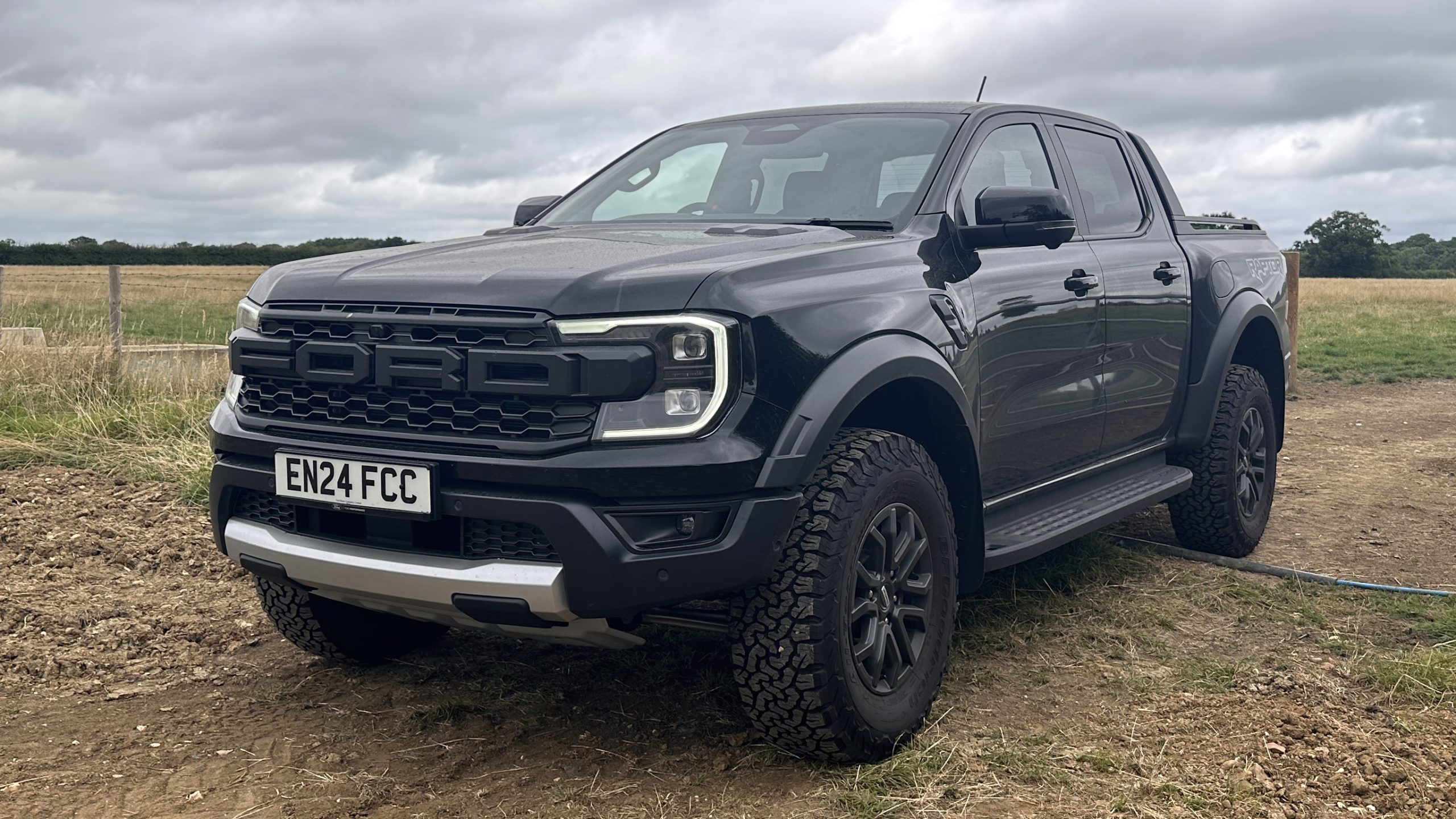
This limitation can also impact practicality in unexpected ways. Installing a rear-facing child seat, for example, often forces the front passenger to move their seat significantly forward, making it uncomfortable for both rows.
In sum, the Ford Ranger SuperCrew is a solid performer in many respects—powertrain, towing, and off-road options—but its tight rear seating holds it back as a true dual-purpose vehicle.
If you need rear passenger space for anything more than short errands or occasional use, it’s worth either sizing up or waiting for the redesigned model.
5. Jeep Gladiator Crew Cab — Rear Legroom: 38.3 in
The Jeep Gladiator Crew Cab brings unmistakable Wrangler DNA into the pickup truck world, combining rugged off-road prowess with open-air freedom and trail-rated credentials.
But while the Gladiator excels in terrain-tackling capability, it makes several compromises for that adventurous spirit—one of which is its tight interior packaging, especially when viewed through the lens of crew cab expectations.
On paper, the Gladiator offers 38.3 inches of rear legroom, which sounds decent—especially compared to midsize rivals like the Tacoma or Frontier. But in practice, the back seat can feel more confined than the numbers suggest, particularly for taller passengers.
The seatbacks are nearly vertical, offering little natural recline, and the upright Jeep architecture means the rear bench is positioned close to the cab wall.
Combine that with limited thigh support from a low-mounted bench and a nearly flat cushion, and comfort starts to diminish over longer rides.
The Gladiator’s unique rear suspension and solid axle setup also slightly raise the floor height, which in turn reduces footroom. Passengers often find themselves in a somewhat knees-up posture, especially with the hard floor and minimal under-seat clearance.
The lack of significant seat contouring doesn’t help, and even though the bench technically seats three, the center spot is best reserved for short trips or smaller passengers.
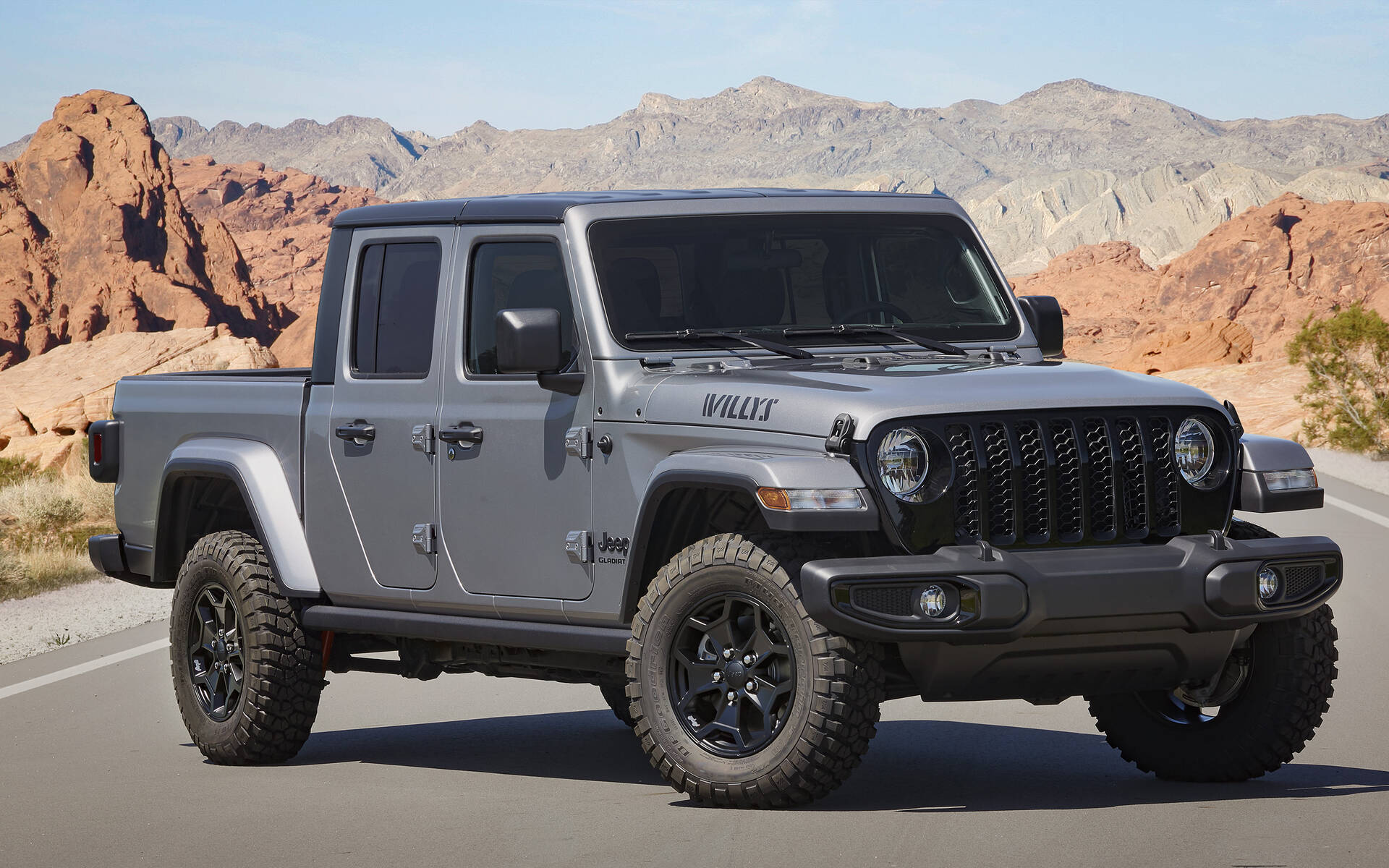
Of course, the Gladiator does offer some clever features to offset its spatial constraints. These include a lockable storage bin under the rear seat, rear USB ports, optional heated rear seats, and removable roof panels for added fun and airiness.
But these perks don’t fully compensate for the rigid seating geometry and the limited adjustability.
In fairness, the Gladiator was never designed to be a full-size family cruiser—it was engineered first and foremost as a Wrangler with a bed. For Jeep loyalists and off-roaders, the slightly cramped rear quarters are an acceptable trade-off.
But for buyers expecting SUV-like comfort from their pickup’s rear cabin, the Gladiator Crew Cab can disappoint.
In short, it’s a purpose-built truck with undeniable charisma—but if rear-seat comfort is a priority, the Gladiator’s adventurous charm might not be enough to win over daily drivers or road trip crews.
In today’s pickup market, the crew cab is more than just a trim—it’s a central part of how a truck fits into your life. For some, it’s a rolling office or weekend workhorse.
For others, it’s a family vehicle, daily commuter, or road trip companion. That’s why interior cab space matters just as much as towing specs or engine output.
The five trucks with the most spacious crew cabs—including the Ram 1500, Ford F-150, Chevy Silverado, Toyota Tundra, and GMC Sierra—demonstrate how far full-size pickups have evolved.
These models offer SUV-level comfort in the rear, with generous legroom, supportive seats, clever storage, and luxury-like amenities.
They’re not just big on paper—they deliver a superior experience for passengers, whether it’s adults on a long ride or a car seat on the daily school run. If interior comfort is a top priority, especially for frequent passengers, these trucks are the clear leaders.
On the flip side, the five pickups with tight crew cabs—like the Nissan Frontier, Chevrolet Colorado, Toyota Tacoma, Ford Ranger, and Jeep Gladiator—highlight that not all four-door trucks are equally roomy.
While these trucks have strengths in areas like off-road performance, fuel economy, or reliability, their second-row seating often feels cramped and uncomfortable for taller passengers.
For buyers who only occasionally carry people in the back, this may be an acceptable trade-off. But if your truck regularly doubles as a family hauler or team shuttle, the limited legroom and upright seating angles can become daily frustrations.
Ultimately, it comes down to how you plan to use your truck. A little more space in the rear cab can make a big difference in everyday usability.
Before buying, it’s worth sitting in the back yourself—or better yet, bringing along your usual passengers.
Because in today’s truck world, it’s not just about horsepower and payload—it’s about who you’re carrying and how comfortable they’ll be.
Also Read: 5 Sedans With Best Throttle Response And 5 That Are Sluggish

